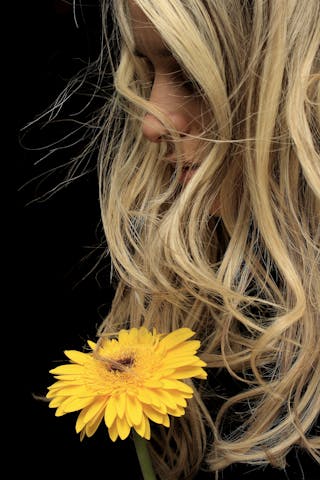Creating An Asexual Character For Tv Showed Me We Have A Way To Go
Have you ever noticed the lack of asexual representation on TV? It's a hot topic right now, and it's definitely something that needs to be addressed. We've come a long way in terms of LGBTQ+ representation, but asexual characters are still few and far between. It's a work in progress, but there's hope for change. In the meantime, if you're looking for a connection, check out these Cuban dating sites to find someone who understands and respects your identity.
When it comes to representation in media, the LGBTQ+ community has made significant strides in recent years. However, one area that still lacks visibility is asexuality. As a writer for a dating blog, I recently had the opportunity to create an asexual character for a TV show, and it opened my eyes to the lack of representation and understanding surrounding asexuality.
Explore the thrills of sensual voyeurism and try it out for yourself!
The Need for Asexual Representation
If you want to learn more about Ladyboy Gold, check out this review and see why you should give it a try.
Asexuality is a sexual orientation characterized by a lack of sexual attraction or desire. It is estimated that approximately 1% of the population identifies as asexual, yet mainstream media largely ignores this community. As someone who is passionate about inclusive storytelling, I saw an opportunity to create a character that could shed light on asexuality and help educate viewers.
Find your perfect match with similar conservative values!
The Challenges of Writing an Asexual Character
As I delved into the process of creating an asexual character, I quickly realized the challenges that come with accurately portraying this identity. Asexuality is often misunderstood and misrepresented, and I wanted to ensure that my character was authentic and respectful. I conducted extensive research, consulted with members of the asexual community, and worked closely with sensitivity readers to ensure that the portrayal was accurate and nuanced.
Breaking Down Stereotypes
One of the biggest hurdles in creating an asexual character was breaking down stereotypes and misconceptions. A common misconception is that asexuality equates to a lack of emotion or intimacy, which is far from the truth. My goal was to depict my character as a fully realized individual with hopes, dreams, and meaningful relationships, both platonic and romantic.
Navigating Romantic Relationships
One of the most important aspects of my character's storyline was navigating romantic relationships as an asexual person. Asexuality does not preclude the desire for companionship or emotional connection, and I wanted to show that asexual individuals are capable of forming deep, meaningful relationships. This allowed me to explore the complexities of navigating intimacy and communication within a romantic partnership.
The Importance of Visibility
Creating an asexual character for a TV show was an eye-opening experience that highlighted the importance of visibility. By showcasing asexuality in mainstream media, we have the opportunity to educate and create awareness about this often overlooked orientation. Representation matters, and by including asexual characters in our storytelling, we can help combat stigma and promote acceptance.
The Work That Still Needs to Be Done
While I am proud of the character I created, I am also acutely aware that there is still much work to be done in terms of asexual representation. Asexuality is a diverse and multifaceted identity, and it deserves to be portrayed in all its complexity. As creators, we have a responsibility to continue pushing for more inclusive storytelling and to elevate the voices of the asexual community.
In conclusion, creating an asexual character for a TV show was a humbling and enlightening experience. It reinforced the importance of accurate representation and the need to challenge stereotypes and misconceptions. As we continue to strive for inclusivity in media, I am committed to amplifying asexual voices and advocating for greater visibility. By doing so, we can create a more inclusive and understanding world for all members of the LGBTQ+ community, including those who identify as asexual.
- https://dating-website.thehottieandthenottie.com/posts/what-tiktok-dating-wrapped-says-about-our-love-lives-in-2022/
- https://hookup-site.sonya-renee.com/posts/my-best-sex-ever-was-with-a-bollywood-star/
- https://free-casual-dating-sites.sonya-renee.com/posts/a-guide-to-mirror-sex-what-is-mirror-sex/
- https://online-meetup-app.warriorkingsbattles.com/posts/black-friday-sex-toy-deals-and-offers-2023/
- https://top-casual-dating-platforms.stylebytes.net/posts/my-best-sex-ever-was-with-my-best-friends-ex/
- https://best-local-dating-platforms.gatective.com/posts/heres-what-i-learned-at-the-worlds-biggest-muslim-speed-dating-event/
- https://local-encounters-websites.prettygirlsmakegraves.com/posts/kivin-method-what-is-the-kivin-method-oral-sex-trick/
- https://top-local-encounters-site.datingapps.shop/posts/gynesexuality-what-does-it-mean-to-be-gynesexual/
- https://free-hookup-platform.niklasbelenius.com/posts/role-play-sex-tips-how-to-role-play-like-a-pro/
- https://hookup-blog.themountaintopplay.com/posts/dating-as-a-gay-disabled-woman-jessica-kellgrenfozard-youtuber/
- https://best-casual-hookup-app.patternismovement.com/posts/benching-is-the-new-dating-trend-well-all-soon-be-practicing/
- https://dating-app.ua-sex.com/posts/what-is-the-ankles-as-earrings-tiktok-sex-position/
- https://online-casual-encounters-app.jershaanddup.com/posts/why-you-should-embrace-your-delulu-dating-goals/
- https://free-local-dating-websites.datingapps.shop/posts/lesbian-sex-positions-14-lesbian-sex-positions/
